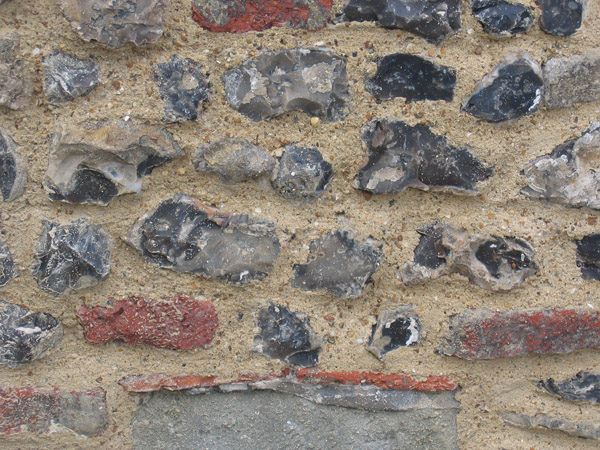Mortars for Repair and Conservation
The design of a lime mortar is vitally important on old properties. Mortars primarily provide a function of binding masonry together in the construction of walls. However, they must do this in an appropriate way. Traditional mortars have been designed to carry out the binding function and several additional functions. The mortars needs to be softer than the masonry they bind; in this way the mortar absorbs and gives up the water content of the wall rather than allowing the water to travel through the masonry. The result is that mortar becomes sacrificial and the brick or stone is protected. This is part of what we mean when we talk about walls breathing. Not only does the mortar need to be soft enough, it must also be capable of absorbing the water in the wall and readily shedding it. This helps explain why sand and cement mortars can be inappropriate; they are harder than bricks and do not absorb and shed water.
What then is a good mortar design? Well we must start with the characteristics of the masonry. Old hand made bricks are softer and more porous than bricks made in mid 19th C in factories or more modern eras. Granite is harder than limestone while chalk is softer. The traditional mortars that we design are lime based with well graded aggregates to provide the appropriate softness and porosity to compliment the masonry. This ensures the required binding and protection for the historic masonry, which is often the major beauty of an old house. We however believe that the mortar also adds to the overall look of historic houses.
Climate and exposure to excessive weathering can also play a part in the choice of the appropriate mortar. Therefore if re-pointing brickwork on an exposed chimney we may use harder lime mortars than that used at ground level in less exposed areas of the building.
As we work mainly on older buildings let us look briefly at traditional building methods, in contrast to modern buildings, in order to assess the best methods of repair. Older buildings have a solid wall construction, no cavities, no damp proof courses or water barriers, and are often 50-60cm wide. They may consist of two facing layers, one internal, one external, and a core in between. In the early and mid 20th C the use of sand and cement became readily available and fashionable. The result was that the old lime mortar that provided this sacrificial binding and had become worn, as they were designed to do, were repaired with these new cement based mortars. These traditional walls are designed to shed water by breathing. They now have to shed water through the masonry and the result is excess wear of the masonry rather than the mortar. The historic fabric of the building is therefore damaged. Clearly our repair techniques in these circumstances are to return to the traditional lime and well graded aggregate mortars.
Lastly let us touch on the subject of matching mortars. Mortars for the repair of old buildings are not only designed to carry out the vital functions outlined above but they often need to match in with any existing mortars that may not have been replaced. We pay particular attention to this. Colour, texture and finishing techniques are vital here. The use of different limes, local aggregates and often different pozzolans can affect the colour of the mortar. Samples of the existing mortars may indicate that clays, muds, chalk and coal may have been added to the original mortars and help give it colour and texture. Where this is the case we will add these as well to the mortar for repair work. The finishing of the drying mortars is also vital and we find that the use of churn brushes helps me match old mortars and display the colour and texture of the aggregates.
